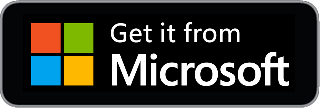Challenges of Monetizing Content via RSS Feeds
Introduction
RSS (Really Simple Syndication) feeds have long been celebrated for their ability to streamline content delivery and boost user engagement. However, when it comes to monetization, RSS feeds present a unique set of challenges that both publishers and marketers must navigate. This article delves into the difficulties of earning revenue through RSS feeds and offers potential solutions for those willing to innovate.
The Unique Nature of RSS Feeds
Before diving into the challenges, it’s essential to understand the unique nature of RSS feeds. RSS allows users to subscribe to multiple sources of content, which is aggregated into a single interface for easier consumption. While this model is user-centric and enhances content discoverability, it also creates several barriers to effective monetization.
The Challenges
Loss of Website Traffic
One of the primary challenges is that RSS readers often display the content within the app or website, which means users may not visit the original website. This loss of traffic can directly impact ad revenues.
Lack of User Data
Traditional website-based analytics tools often cannot capture user behavior within an RSS reader. The absence of this data makes it challenging to segment audiences and deliver targeted advertisements.
Ad-Blocking Technologies
Many RSS readers come equipped with ad-blocking features or simply don’t support the display of ads within the feed, reducing the effectiveness of ad-based revenue models.
Content Scraping
RSS feeds are sometimes scraped by other websites, which not only dilutes the exclusivity of the content but also potentially violates copyright laws, impacting the content's value.
Branding Limitations
The standardized format of RSS feeds often leaves little room for branding, making it harder for publishers to differentiate themselves and add value to their content.
Potential Solutions
Partial Feeds with CTAs
Rather than publishing full articles within the RSS feed, offer a summary or a snippet, followed by a call-to-action (CTA) that directs readers to your website.
Sponsored Content and Native Ads
Consider integrating sponsored content or native advertising within the feed. However, it’s crucial to clearly label such content to maintain reader trust.
Premium Feeds
Offer a basic free RSS feed alongside a premium version that includes exclusive content, an ad-free experience, or other value-added features.
Analytics Integration
Some advanced RSS platforms offer analytics integration, allowing you to gather valuable user data for better targeting.
Collaborate with RSS Reader Platforms
Work with popular RSS reader platforms to find mutually beneficial monetization strategies, such as revenue-sharing from ads displayed within the reader app.
Real-world Case Studies
News Websites
Some major news outlets offer partial feeds and use CTAs to drive traffic back to their websites where paywalls are in place.
Tech Blogs
Several tech blogs successfully monetize their RSS feeds through sponsored content, carefully aligning the sponsored posts with their core content to maintain reader trust.
Niche Publishers
Some niche publishers offer premium feeds, enticing subscribers with exclusive insights, interviews, and research reports that are not available in the free version.
Conclusion
While the inherent nature of RSS feeds creates significant challenges for monetization, they are not insurmountable. With a blend of creativity, collaboration, and a keen understanding of the platform’s limitations, publishers can find ways to turn this popular content distribution channel into a revenue stream. The key lies in balancing user experience with monetization efforts, a challenge that requires ongoing experimentation and adaptation.

